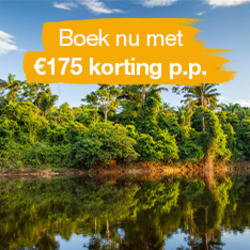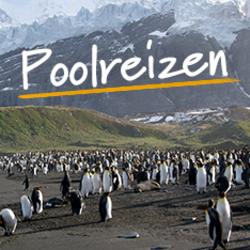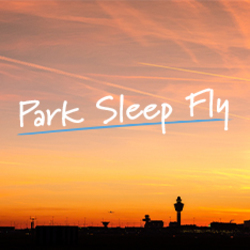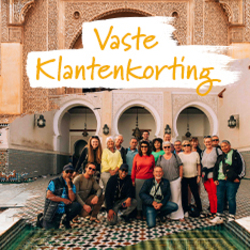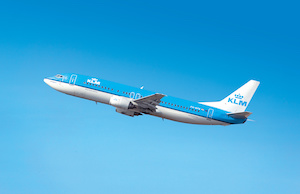Profiteer t/m 12 mei
BekijkActivities
- Culture
- Multi-Country Culture Holidays
- Cultural Wonders
- Natural Wonders
- Multi-Country Holidays
- — Marvel at the Islamic architecture of Registan Square in Samarkand — Wander through the Silk Road city of Bukhara, full of domes and minarets — Enjoy the mountains and lakes of Kyrgyzstan and Kazakhstan — Explore the Charyn Canyon in Kazakhstan — Stay a night in a Kyrgyz yurt — Get a taste of rural Uzbekistan in the small town of Urgut
- Culture Bestsellers
Food
Activities
-
1
Start Bishkek
The adventure begins in Bishkek. We have a city tour this afternoon, spending a couple of hours visiting the main city sites, including Ala Too Square, Parliament House, the White House, the Lenin Statue and the Manas Monument. You can check in to the hotel from 10am. Accommodation: Hotel Garden or Hotel Bridges (or similar)
-
2
Ala-Archa Gorge
We visit Ala-Archa National Park at an altitude of 6,890ft (2,100m). The reserve is a small valley inside the gorge, its ridges permanently ice-covered with slopes blanketed by spruce forest. Meltwater flows from glaciers and becomes the Ala-Archa River. Take a hike to a waterfall or a relaxing walk along the river. We return to Bishkek for a free afternoon. Accommodation: Hotel Garden or Hotel Bridges (or similar)
-
3
To Chon-Kemin Gorge
On the way to Chon-Kemin Gorge, we stop at the 11th-century Karakhanid minaret, a Unesco World Hertiage site and the first minaret of its kind in Central Asia. You can climb to the top of the tower. Take care, it’s quite dark inside and the stairs are steep and narrow. Nowadays, it is a complex that includes the tower itself, reconstructions of mausoleums found on the site, remains of a citadel, collection of balbals (gravestones used by nomadic Turkic peoples), petroglyphs (stone carvings) and a small museum. Following our visit, we continue to Chon-Kemin National Park, a quiet valley with several small villages and farmed lands surrounded by magnificent mountains and fir forest. It is a wonderful place to be, to sit on the doorstep with a pot of tea. Accommodation: Guesthouse Kemin (or similar)
-
4
Issyk Kul Lake and Djety Oguz Gorge
We continue our journey through the Tien Shan mountains along the southern side of Issyk Kul Lake. The second largest salt lake in the world, it measures 43mi by 112mi (70km by 180km) and reaches almost 2,300ft (700m) deep. The name translates to Hot Lake, as it never freezes over, even in the depths of winter. It’s surrounded by a mixture of forest and meadow with a backdrop of mountains and glaciers. Optional excursion (approximately US$120-US$150 per group): Stop at Bokonbaev village to observe a traditional form of falconry found throughout Central Asia – hunting with eagles. Eagle hunting plays a key role in the nomadic lifestyle here and can also be seen during national competitions. Next, we visit Barskaun Gorge and take a hike to a waterfall. We then visit Djety Oguz, which translates to the Valley of Seven Bulls, named after the distinct seven red-coloured rocks in the gorge. We can learn about the local legends behind the name as we walk out of the beautiful gorge (approximately two hours) through fir forest, yurt settlements and grazing lands. If you’re feeling energetic, there is also the option to hike to a waterfall. The trail can be slippery, so this is not advisable in wet weather. Tonight we stay in a yurt camp, made of six sleeping yurts (each accommodating four to five people) and one communal/dining yurt. There is a shower and three Western-style flush toilets but hot water for washing must be requested specifically. There is also a generator for electricity for three hours in the evening. Spending a night in a yurt camp is a fantastic experience and a small insight into the centuries-old way of life for many nomadic people in Central Asia. Accommodation: Yurt Camp, Djety Oguz April and October departures: we will stay in Almaluu Yurt Camp close to Lake Issyk Kul, rather than a camp in Djety Oguz. We will still visit Djety Oguz, but due to the different location of the yurt camp, the order of activities today and tomorrow will differ slightly in these months. Almaluu is better suited than Djety Oguz for these cooler months.
-
5
Karakol
We enjoy a morning walk in the Djety Oguz Gorge. We continue to the city of Karakol, where we enjoy a sightseeing tour taking in old Russian-style houses, a Russian Orthodox church, a wooden Dungan mosque, and Karakol bazaar. Tonight, we enjoy a home-cooked meal at a local Uygur or Dungan family home. Accommodation: Matsunoki Hotel (or similar)
-
6
To Almaty, Kazakhstan via Charyn Canyon
Today we cross the Kyrgyz-Kazakh border and, after border procedures, travel along the picturesque Karkara valley, where mountain flowers attract many beekeepers. We head towards Charyn Canyon, where the dramatic erosion caused by the Charyn river has created an impressive landscape. We then continue to Almaty. Accommodation: Plaza Hotel (or similar)
-
7
Day trip to Issyk and Turgen Gorge
Today is a long day with considerable driving as we head out of Almaty to stretch our legs and explore the countryside. We first drive to Turgen Gorge, known for its beautiful natural scenery and waterfalls (some as tall as 130ft/40m), stopping at a supermarket en route to buy food for a picnic lunch. Along the way, we'll make a short photo stop near several Scythian burial mounds, with the Ile-Alatau Mountain Range in the distance. Arriving at the gorge by late morning, we walk for around 45 minutes (0.8mi/1.3km) on a rocky/sandy trail following the river to Bear Waterfall. After exploring the gorge, we drive to a shady spot for a picnic lunch, before continuing by road for approximately 1hr 45min to Issyk Lake (or Esik Lake), not to be confused with Issyk Kul Lake in Kyrgyzstan, which we visit earlier in the trip. Amid thick forests and wildflower pastures, this alpine lake is 5,775ft (1,760m) above sea level within the Issyk Gorge. We walk down the concrete staircase to explore the southern shore of the lake. Finally, we return to Almaty for the night. Accommodation: Plaza Hotel (or similar)
-
8
Sightseeing tour of Almaty and train towards Tashkent
Almaty is a beautiful city backed by the Tien Shan mountains and we have the whole day to explore it. With leafy streets and a cafe culture, the former Kazakh capital has a distinctly European feel. After breakfast, we visit several sites, including Zhenkov Cathedral (Ascension Cathedral), made entirely of wood and without the use of nails; Panfilov Park; the Monument of Panfilovs 28 Guardsmen; the Great Patriotic and Civil War monuments and eternal flame; and one of the museums (National History Museum or Museum of National Instruments). After the tour, we drive to the train station. Here we say goodbye to our tour leader who has been with us throughout Kyrgyzstan and Kazakhstan and meet our Uzbekistan leader who’ll be with us for the remainder of the trip. We travel overnight from Almaty to Tashkent. We leave Almaty in the evening and depending on train timetables, we'll either travel by sleeper train all the way to Tashkent, a journey of about 16 hours, or we’ll travel as far as Shymkent by sleeper train, a journey of about 11 hours, then continue by road for two hours to the Kazakh-Uzbek border, then following the border crossing which typically takes 1-2 hours, continue for another 40 minutes to Tashkent. Travelling on trains through this region is a great way to cover large distances (almost 620mi/1,000km in this case), see the changing landscape, and mingle with local people. We use four-berth compartments on this sleeper train, which is reasonably comfortable but not luxurious. Accommodation: Sleeper train (four-berth compartment)
-
9
Arrive Tashkent, Uzbekistan
We usually arrive in Tashkent, the capital of Uzbekistan between mid morning and early afternoon. We’ll have a short tour of the city, time permitting, visiting: Independence Square, which is flanked by public buildings and water fountains, and the Old City with its mausoleums (Hast Imam complex) and bazaar. Tashkent was largely destroyed by earthquakes in the 1960s and was rebuilt in true Soviet style with pleasant leafy boulevards and lots of fountains to keep the heat down in summer. Accommodation: Gabrielle International hotel (or similar)
-
10
Train to Samarkand
We catch the morning fast train to Samarkand, arriving mid-morning, and spend the rest of today and tomorrow morning exploring. The city is steeped in history, dating back 2,500 years and impacted by figures such as Alexander the Great, Genghis Khan and Tamerlane, the latter made it the capital of his empire in the 14th century. A central position on the Silk Road meant it was an important stop on the route from Istanbul to Peking (now Beijing). At its heart is Registan Square, which is flanked by the three grand madrasahs (Islamic colleges) of Ulughbeg (15th century), Sherdor and Tilya Qori (both 17th century). Over the next day and a half, we visit the grand square plus the Gur Emir Mausoleum, burial place of Tamerlane, his sons and his grandson, Ulughbek. We move onto the Bibi Khanum Mosque and Shakhi Zinda – the Living King necropolis – with its series of mausoleums dating to the 14th and 15th centuries. Our final visit is to Siab Bazaar to scour fruits, nuts and other local produce. The leader may shift the order the sites are visited. Accommodation: Malika Prime (or similar)
-
11
Samarkand and Urgut
Today we travel to Urgut (one hour) for a half-day excursion around the picturesque provincial town at the foot of the Zeravshan mountain range. We’ll visit the bazaar, a pottery workshop, Four Chinar garden (home to 1,000-year-old chinar trees), and Karatepa reservoir. Later we continue our discover of the Samarkand sites, including the Necropolis and Ulugbek's Observatory. We’ll also visit a paper factory where traditional methods are used. Accommodation: Malika Prime (or similar)
-
12
Bukhara
We take the morning fast train to Bukhara and spend two full days exploring. The best-preserved medieval city in Central Asia, this Unesco World Heritage site dates back more than 2,000 years. Our city tour takes us to the Lyabi Khauz complex, built in the 16th and 17th centuries. It’s home to the oldest pool of its kind in Central Asia, surrounded by madrasahs and a khanaka (lodging house for travelling sufis), including the largest madrasah in Bukhara, the 15th-century Kukeldash Madrasah. We continue to the Poi-Kalyan religious complex with its 157ft (48m) tall 12th-century Kalyan minaret – the symbol of Bukhara; the large Kalyan Mosque (15th century) with galleries topped by 288 domes; and the only active madrasah in the city, Bukhara Miri-Arab (16th century). Next is the Samanid Mausoleum, the oldest piece of Islamic architecture in Central Asia and burial site of the 10th-century emir, Ismail Samani. Finally, we visit the Ark, a fifth-century citadel and the oldest building in Bukhara. Accommodation: Kavsar Hotel (or similar)
-
14
End in Bukhara, or extend your trip to Khiva
Your trip ends in Bukhara today. Or, continue the trip with our exciting extension to Khiva, another major city on the Silk Road. Speak to your sales representative to book.






